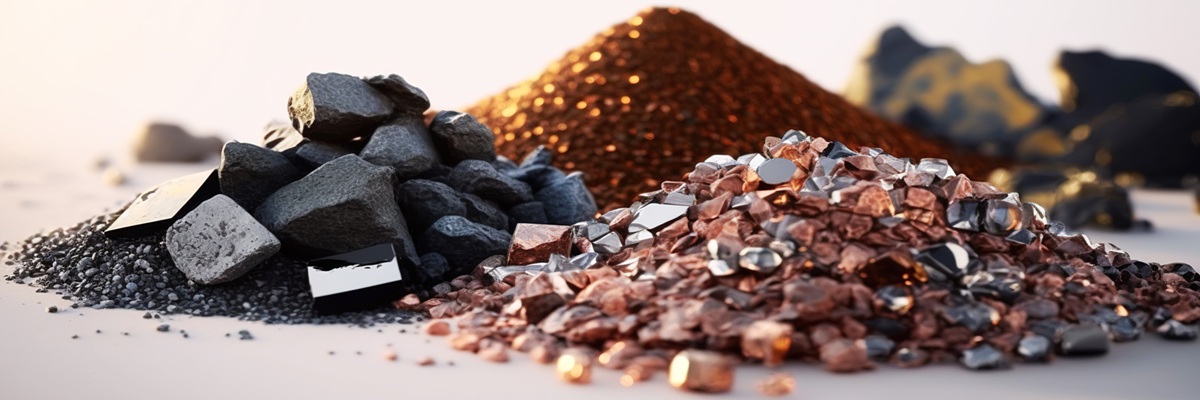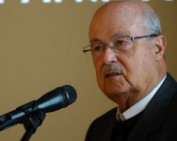Energy & Economics
Rare earths and the geopolitics of minerals

Image Source : Shutterstock
Subscribe to our weekly newsletters for free
If you want to subscribe to World & New World Newsletter, please enter
your e-mail
Energy & Economics

Image Source : Shutterstock
First Published in: Feb.17,2025
Mar.17, 2025
Strategic minerals, essential to our modern life, not only explain geopolitical movements and current conflicts but also why the world is turning its attention to Africa.
In another of his theatrical statements since taking office, the new President of the United States, Donald Trump, presented his proposal to bring peace to Ukraine after a phone conversation with Vladimir Putin. Among Trump's remarks, one of the most surprising aspects (aside from territorial concessions to the Russians and the guarantee that Ukraine would not join NATO) was that the U.S. president put a price not only on the military aid provided to Zelensky so far but also on U.S. mediation services: access to Ukraine's rare earth minerals.
Trump's words make it clear that strategic minerals are now the key element in understanding geopolitical movements around the world. These minerals also help to explain the geopolitical "revaluation" that the African continent is experiencing — that is, why Africa is attracting so much attention from Chinese, Russian, Indian, Arab nations, Turks, and, of course, Europeans.
Last week, I explained how strategic minerals (such as coltan, cobalt, etc.) are one of the main factors behind the conflict in eastern Democratic Republic of the Congo (DRC). They are also key to understanding why Rwanda is being allowed to support a rebel group (a UN report states that 5,000 Rwandan soldiers are on the ground) or even to directly challenge Congo's territorial sovereignty.
This is what experts call "the geopolitics of mineral resources," which explains why Africa is experiencing this moment of “renewed” global interest. The growing demand for electric batteries, wind turbines, and solar panels have put critical minerals at the center of attention, as they are essential for their production — many of which are found in abundance on the African continent. In fact, Africa holds a significant share of the world's essential minerals for global industry: 70% of the world's cobalt reserves, 90% of platinum, 60% of manganese, and 40% of diamonds, among other strategic resources.
The advancement of electrification and the transition to renewable energy have driven up the demand for minerals such as lithium, cobalt, and nickel, which are essential for lithium-ion batteries that power electric vehicles and energy storage systems. Demand for these materials is expected to triple by 2040 and increase sixfold by 2050.
China, Europe, and the United States have intensified their investments in Africa to secure access to these strategic resources, sparking debates about African economies' dependence on external actors.
Rare earths, a group of 17 chemical elements essential to produce advanced technology, are also part of Africa's geopolitical landscape. These minerals, such as neodymium (used in permanent magnets for electric motors), dysprosium (key in wind turbines), and lanthanum (used in batteries and optical lenses), are crucial for the energy transition.
Although Africa accounts for only about 5% of global production, countries like South Africa, Burundi, and Tanzania hold significant deposits. As global demand grows, the continent has the potential to increase its market share if it can develop extraction and refining capabilities.
Cobalt is a clear example of the dilemma surrounding Africa's mineral wealth. As I mentioned last week, the DRC is the world's largest producer, supplying 70% of the global market. However, it is also at the center of an industry plagued by severe social and environmental issues. Mining operations in the country are marked by reports of child labor, poor working conditions, and conflicts over control of mineral deposits. Despite efforts to regulate the sector and promote responsible mining, cobalt remains a strategic resource fiercely contested by multinational corporations and governments seeking to secure their supply for the battery industry.
Beyond the key minerals for the energy transition, Africa remains a major supplier of traditional resources such as gold and diamonds. South Africa, Ghana, and Mali produce around 25% of the world’s gold, while Botswana, Angola, and the DRC account for more than 50% of diamond production. However, the history of these minerals is marked by conflict and exploitation. I vividly remember the movie “Blood Diamond”, which portrays the reality of “conflict diamonds,” extracted from war zones and used to finance armed groups — a problem that still persists in regions like Sierra Leone and the DRC.
Obviously, Africa’s main challenge is that the extraction of these minerals adds no value, meaning that what is taken from its soil is not processed within its territory. This is what economists call value chains: the dependence on exporting unprocessed raw materials keeps African countries at the lower end of the value chain, limiting their economic benefits.
If you add to that, in countries like the DRC, a chaotic environment filled with armed groups, illegal smuggling to neighboring countries, and an almost entirely informal mining economy, the resource curse becomes clear: elites take their share, workers live in near-slavery conditions with virtually no labor protections, and the real wealth is accumulated in countries far from these mineral deposits — mostly in China and the West.
The future of mining in Africa will be shaped by the growing demand for these critical minerals, the expansion of foreign investment, and the challenge — yet also the responsibility — of making mining more sustainable. Cobalt, lithium, and rare earths will become increasingly sought after by global powers like China, the European Union, and the United States, intensifying competition for their control.
And while this seems to reinforce the resource curse, treating the continent as a piggy bank to be emptied coin by coin, it should instead represent a huge opportunity for Africans — to gain access to the wealth generated by the raw materials they live upon. The key lies in strengthening local refining and manufacturing and improving governance in the mining sector.
Transparency, stability, and infrastructure development will be crucial for mining in Africa to drive economic growth and social progress. Its role in the geopolitics of minerals is already essential and will become even more so in the coming decades. If the continent can overcome its structural challenges, it will be able to transform its mineral wealth into a driver of sustainable development and economic autonomy.
A wish that, unfortunately, may sound excessively utopian in the face of a system driven by greed, one that only wants minerals to keep producing more devices and generating more profit. And to achieve that, it needs them to be cheap, which is why it doesn’t question whether the extraction of coltan and cobalt is causing deaths in the Congo or any other corner of Africa. The first step toward change is for all of us, as citizens, to understand what we hold in our hands when we make a call or order food through our phones. We must start demanding that the governments allowing their sale and the companies profiting from them ensure that these resources are not obtained through exploitation and the killing of innocent people.
Article written by José Segura Clavell, Director General of Casa África, and published originally in eldiario.es, Kiosco Insular, and Canarias 7 on February 14 and 15, 2025.
First published in :

José Segura Clavell was born on 4 July 1944 in Barcelona. Married with 3 children, he is a Doctor in Chemical Sciences, Professor of Thermodynamics at the Official Nautical School of Tenerife and Professor of Applied Physics at the University of La Laguna.
A member of the Socialist Party, he was a councillor of the Cabildo of Tenerife from 1979 to 1991, and president from 1983 to 1987. In 1989 he was elected senator for the island of Tenerife, a post he held simultaneously for two years (1991-1993) with that of mayor of San Cristóbal de La Laguna. Between 1993 and 1996, he again served as senator. In 1996, he was elected deputy for the province of Santa Cruz de Tenerife until 2004, when he resigned from Congress to take up the post of Government Delegate in the Canary Islands (2004-2008).
He has been awarded the Gold Medal of the island of Tenerife, the Silver Cross of Merit of the Civil Guard and the Grand Cross of the Order of Military Merit. Author of books on Thermodynamics, irregular immigration, Special Register of Ships, air transport, climate change, electricity reform, strategic plan for the Canary Islands, among others, and 4 volumes with his articles on Africa written since he was appointed Director General of Casa África on 18 March 2019.
Unlock articles by signing up or logging in.
Become a member for unrestricted reading!